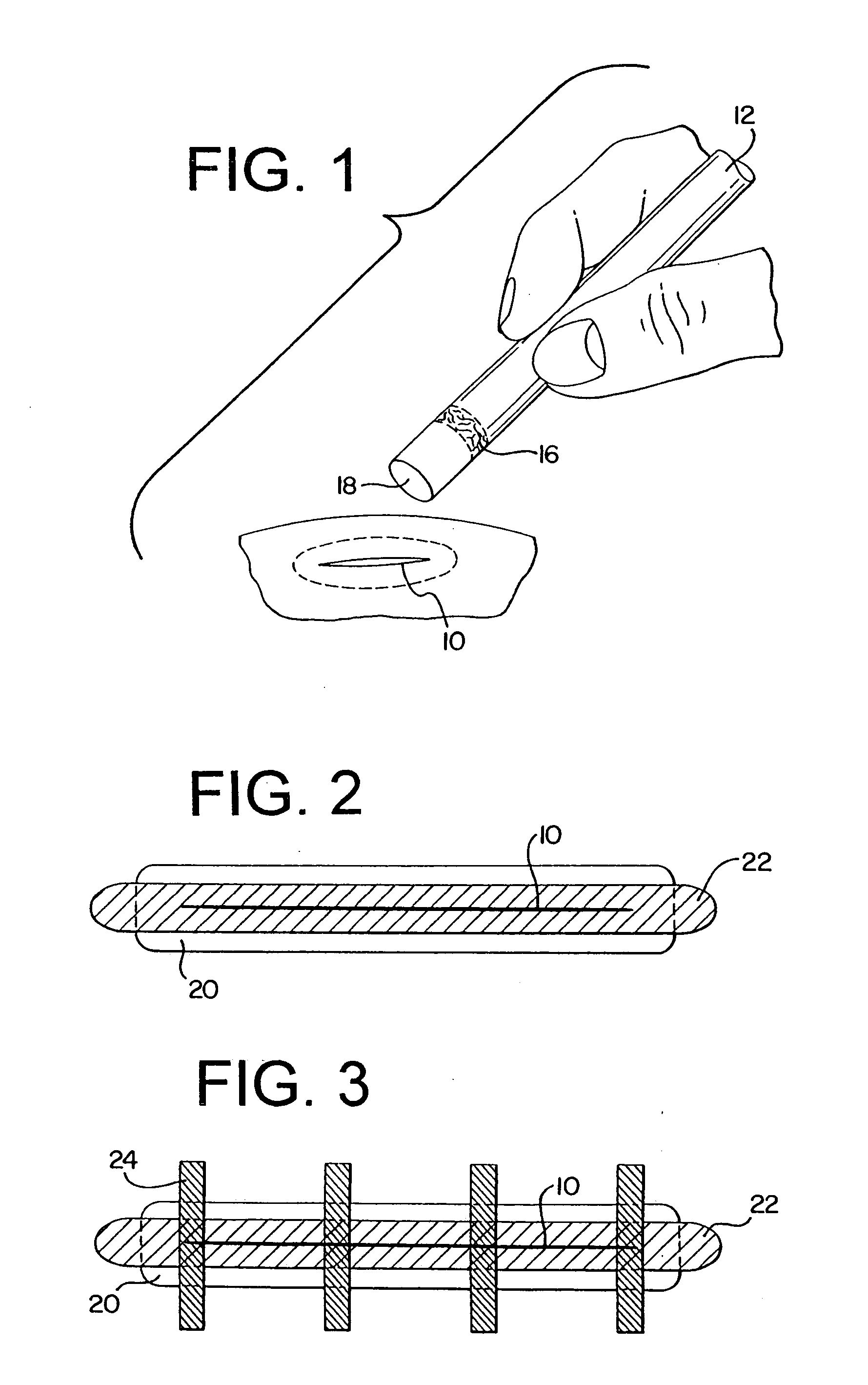Dressing and method of treatment for a wound
a wound and dressing technology, applied in the field of wound treatment, can solve the problems of increasing scarring, affecting the healing effect of wounds, so as to reduce or minimize the amount of scarring reduce or minimize the occurrence of scarring and/or dehiscence around the wound site, and reduce or minimize the scarring
- Summary
- Abstract
- Description
- Claims
- Application Information
AI Technical Summary
Benefits of technology
Problems solved by technology
Method used
Image
Examples
Embodiment Construction
[0023] While the present invention is susceptible of an embodiment in many different forms, this disclosure will describe in detail at least one preferred embodiment, and possible alternative embodiments, of the invention with the understanding that the present disclosure is to be considered merely as an exemplification of the principles of the invention and is not intended to limit the broad aspect of the invention to the specific embodiments illustrated.
[0024] According to the present invention, with reference to FIGS. 1-3, the treatment of a wound comprises the use of the adhesive material 2-octyl cyanoacrylate 16. This topical skin adhesive is widely commercially available; for example, the adhesive is sold under the commercial name Dermabond™ and Nexabond™. The adhesive is applied to a wound site 10 through the use of an applicator 12. A vial (not shown) inside the applicator 12 stores the unused 2-octyl cyanoacrylate 16 until application, and the material is applied to the wo...
PUM
| Property | Measurement | Unit |
|---|---|---|
| width | aaaaa | aaaaa |
| width | aaaaa | aaaaa |
| length | aaaaa | aaaaa |
Abstract
Description
Claims
Application Information
 Login to View More
Login to View More - R&D
- Intellectual Property
- Life Sciences
- Materials
- Tech Scout
- Unparalleled Data Quality
- Higher Quality Content
- 60% Fewer Hallucinations
Browse by: Latest US Patents, China's latest patents, Technical Efficacy Thesaurus, Application Domain, Technology Topic, Popular Technical Reports.
© 2025 PatSnap. All rights reserved.Legal|Privacy policy|Modern Slavery Act Transparency Statement|Sitemap|About US| Contact US: help@patsnap.com

